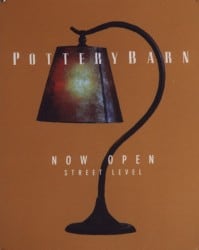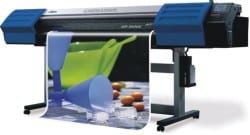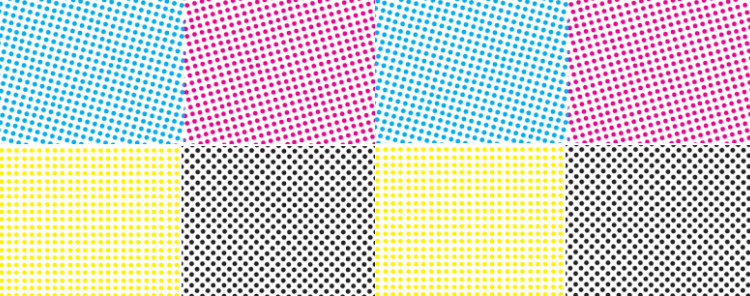The kinds of inks used and designed for banner and poster Printing.
Question: An anonymous reader asks today about the types of ink that are used for printing banners and posters?
This is a pretty broad-based question as it has less to do with what is being printed versus what type of printing is being used to print the posters and banners, although material will also have somewhat to do with the type of printing being done.
With poster printing, the type of inks being used are potentially several different types, again, depending on the printer itself. If you need a short run of posters, the most cost effective way will be do have a digital printing company print you posters on a roll-to-roll wide format digital printer. The inks today, in the US, are soy-based eco-friendly inks, although you’d be hard-pressed to tell the difference between solvent and soy base inks, both by the smell and by the print quality.
Screen-printed Posters
 Posters could also be screen-printed, although this method is not as common as it once was. Screen printing inks are typically soy-based also in the US (it’s the law), although there are a few types of ink within this print genre. Most commonly used would be UV, or ultraviolet light cured inks. When printing four color process (4 CP) posters, the inks are laid down successively, first yellow, then magenta, then cyan, and finally , black. You’ll often see these ink colors annotated as C-M-Y-K, which are the four colors of the 4 CP process.
Posters could also be screen-printed, although this method is not as common as it once was. Screen printing inks are typically soy-based also in the US (it’s the law), although there are a few types of ink within this print genre. Most commonly used would be UV, or ultraviolet light cured inks. When printing four color process (4 CP) posters, the inks are laid down successively, first yellow, then magenta, then cyan, and finally , black. You’ll often see these ink colors annotated as C-M-Y-K, which are the four colors of the 4 CP process.
With screen printing, the inks have to dry between colors printed, so the UV process is really the only way to go in the modern era, though we’re seeing digital printing supplanting this process except on lower color quantity, higher quantity prints and believe screen printing will be obsoleted within a few years, although we could be wrong in this assessment. Inline screen printing presses with various print color screens can still turn out very high quantities of posters or banners even printing 4 or 6 colors, but the fastest printing is offset lithographic printing, more commonly called just offset printing.
Offset Printing for Large Posters
Again, the inks used with offset printing, by law in the US, are soy-based, but have small differences in the formulation, but the outcome is essentially the same. There are some offset printers that print very small items such business cards (although they are “gang-printed” on sheets and then sheered, typically.
 There are larger format offset printers that can print large posters as well. This print process, once set up, is used for very large runs of posters. While banners can be offset print, there are size limitations that will make it so large banners are not likely to be run on an offset press. That domain is generally reserved for digital printing now, where printers can print over 16 feet in width and as long as the roll is (typically 50 yards).
There are larger format offset printers that can print large posters as well. This print process, once set up, is used for very large runs of posters. While banners can be offset print, there are size limitations that will make it so large banners are not likely to be run on an offset press. That domain is generally reserved for digital printing now, where printers can print over 16 feet in width and as long as the roll is (typically 50 yards).
So while ink will vary as far as formulations for the type of printing done, there may be only an added solvent that will make a vinyl or polypropylene banner printable that isn’t in the paper poster ink, but the differences are minimal, and most inks now are UV curable or quick drying as they come off a heater printer platen, not the slower drying inks that were around when I began in the printing business.
For more about poster printing and the like, visit this page https://www.visigraph.com/tradeshow-displays/
Popular Posts:




